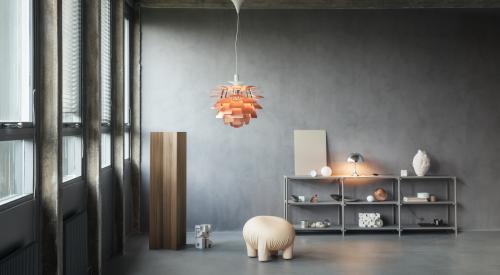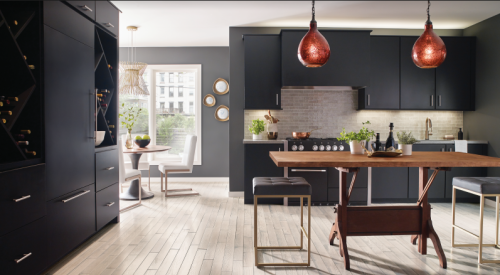The international tile world turned its attention to Spain last week as the Spanish tile industry held its 38th annual Cevisama exhibition of ceramics and porcelain. This year, oxidized metal looks, concrete, textiles, and three-dimensional looks stole the show.
One of two important European tile shows, Cevisama brings together more than 800 exhibitors in more than 1 million square feet of exhibit space. The show also attracted more than 90,000 attendees ranging from purchasing groups, wholesalers, distributors, architects, designers, and retail stores, among others.
Calendar year 2019 was a good one for the Spanish tile industry. At the Tile of Spain Press Conference, the Spanish Ceramic Tile Manufacturers Association (ASCER)—the Spanish tile trade association—reported that most of the tile produced in Spain—about 75 percent—was exported to International markets. Sales were up by about 4 percent in 2019, even though total production was done by about 5 percent.
The industry saw a 5 percent increase in exports to the United States, the Spanish ceramic tile industry’s second most important market after France. But officials at the press conference stress that the North American market is fast becoming the most important growth segment.
Trending Spanish Tile Looks
So what tiles looks are trending this year? The industry offers a broad range of styles, from large sizes, metallic looks to outdoor pavers and mosaics, some prevailing themes are trending more than others. Some of the hot looks this year included hexagon patterns, texture, textile looks, mixed looks on one tile (for example and ceramic and wood), hyper-realistic stone looks, and color—lots and lots of color.
Here are 13 products that caught our attention:
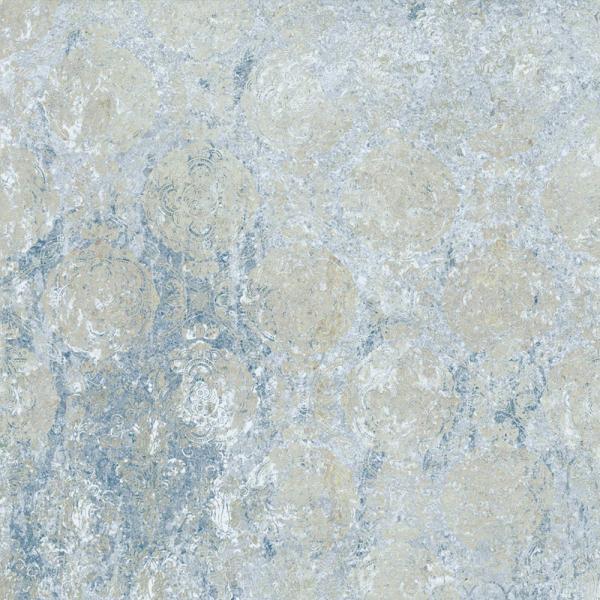
Aparici Bohemian is shown here in Blue Natural.
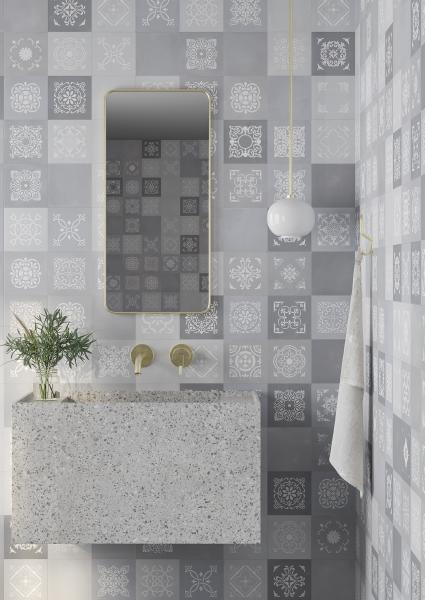
Gayafores Delice is a new interpretation of the traditional cement tile, in line with the soft heritage trend that is still very much in vogue among professionals of architecture, decoration and interior design. It's shown here in gray.
Rocersa Eleganza
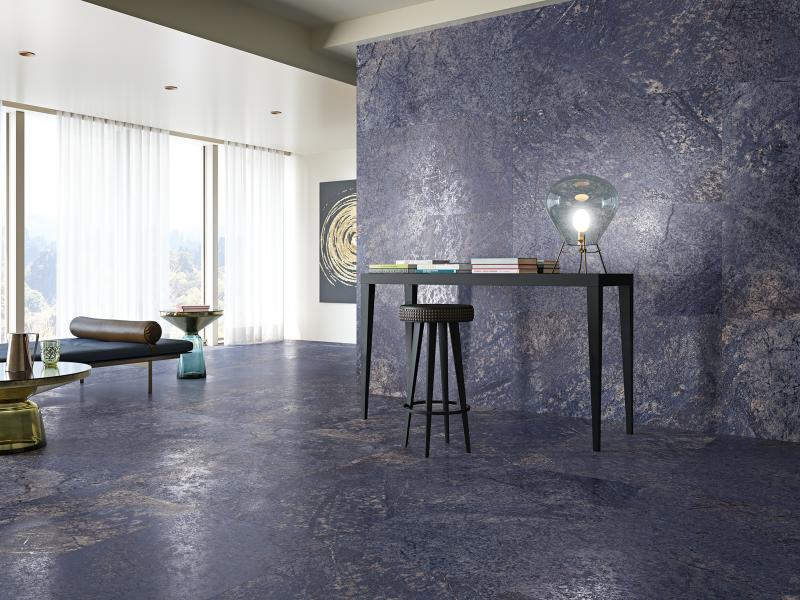
Azteca Bay draws inspiration from authentic Azul Bahía marble from Brazil. The collection consists of three colors: Blue, which represents this marble as we find it in nature; Silver; and Grey. These are two neutral tones that represent original stones, since they cannot be found in nature. Tiles comes in two sizes in both a lacquered and a matte finish, whcih has a subtle shine effect.
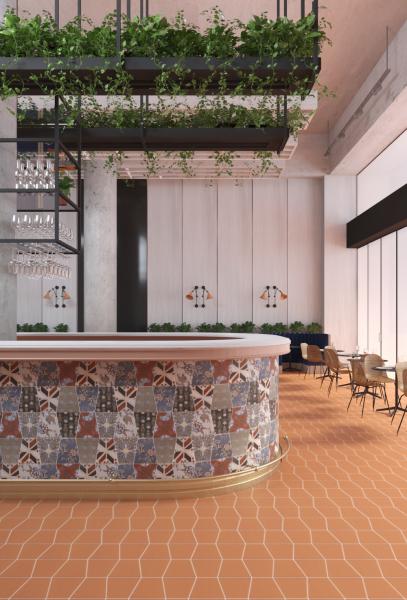
Cevica Chintz draws inspiration from a fabric printed with flowers, fruits, birds and other designs that came from India and was very popular in England and France in the 17th century. The Trapezoid floor and wall tiles are made of porcelain with an R10 finish, which also makes it perfect for commercial projects. The series consists of eight solid colors and eight deco tiles.
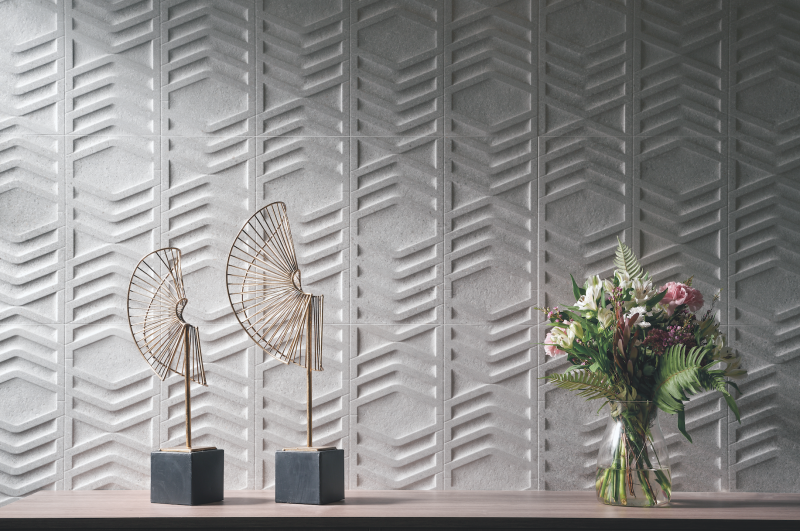
Keraben Underground represents a concrete with embedded stones that transports us directly to a New York street, the company says. It comes in floor and wall tiles in five colors and a variety of sizes.
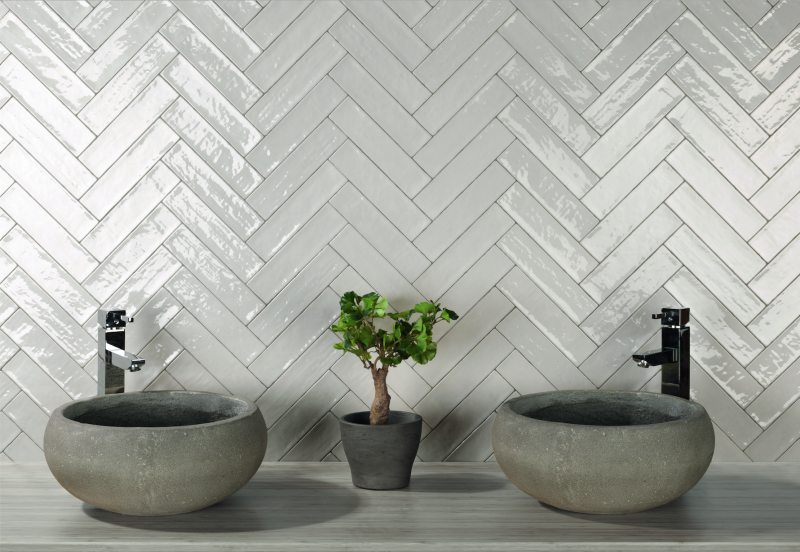
Natucer Zellige comes in two sizes and 11 matte and glossy colors.
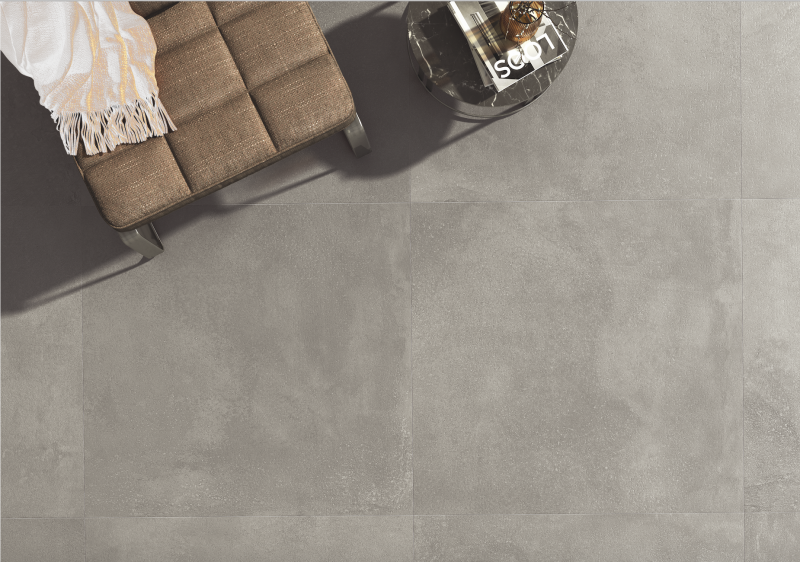
Roca's Abaco Grafito floor tile is a dead-ringer for polished concrete.
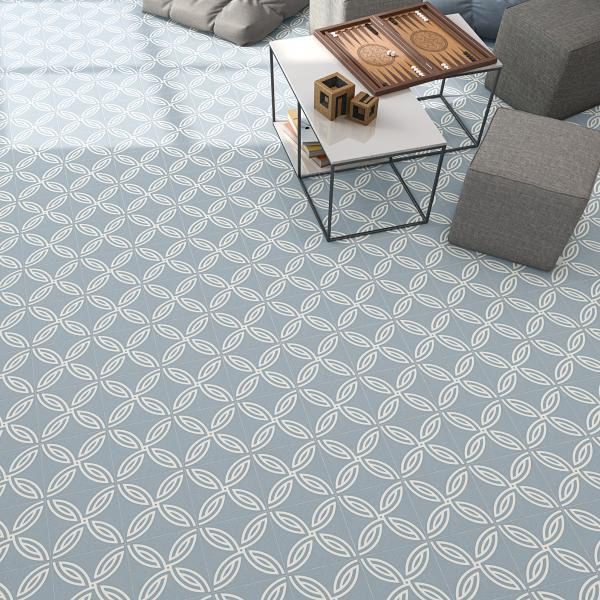
Vives Ceramica's Alameda Andrassy Cielo floor tiles.
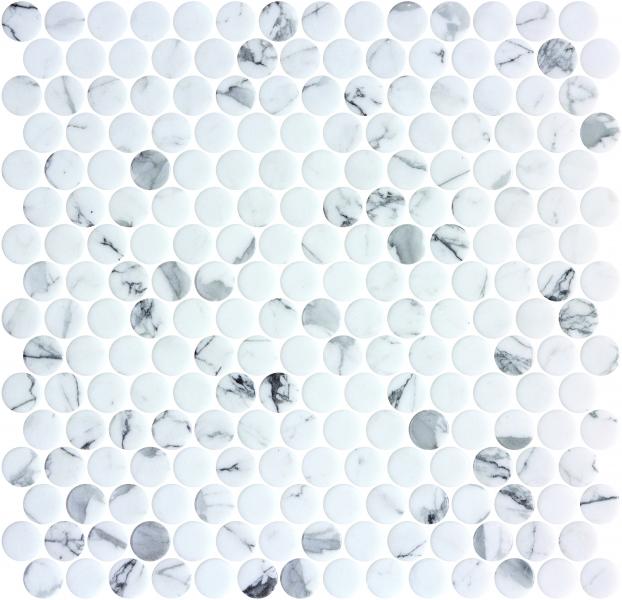
Onix Mosaico Deco Penny mosaic tiles are made from 98 percent recycled glass. They are shown here in Fosco Matte.
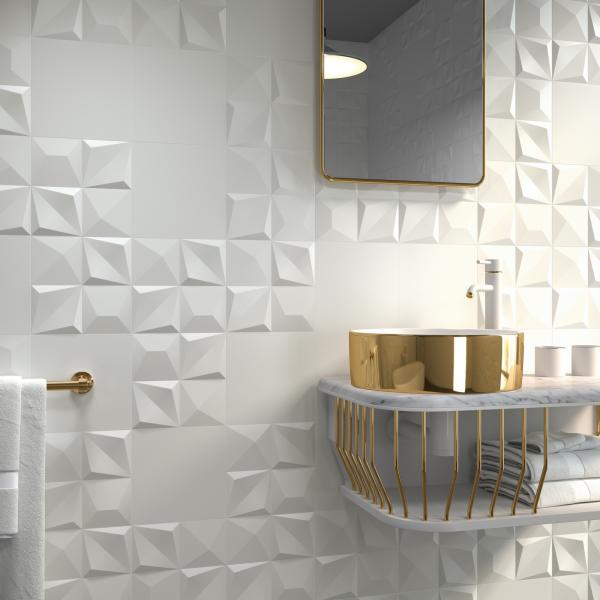
Dune Shapes come in a wide variety of textured and regular wall tiles.
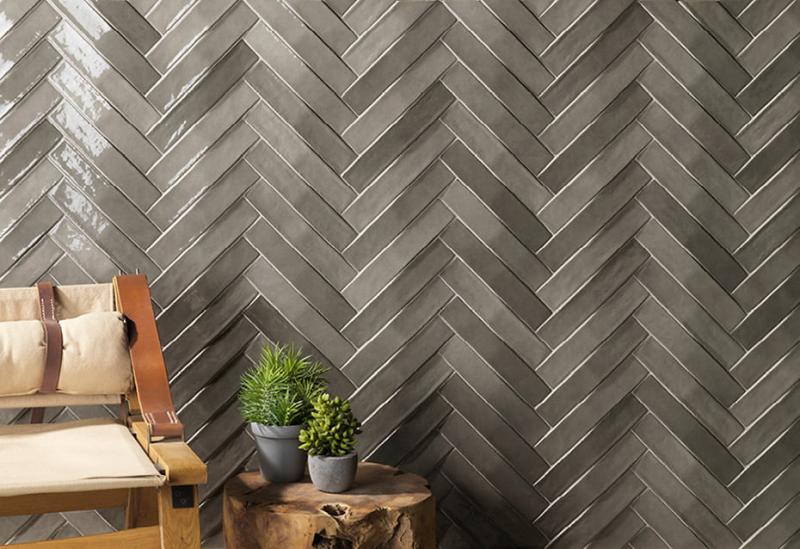
Natucer's Ash Convex Mix tile offers a three-dimensional design and is shown here in Gray.
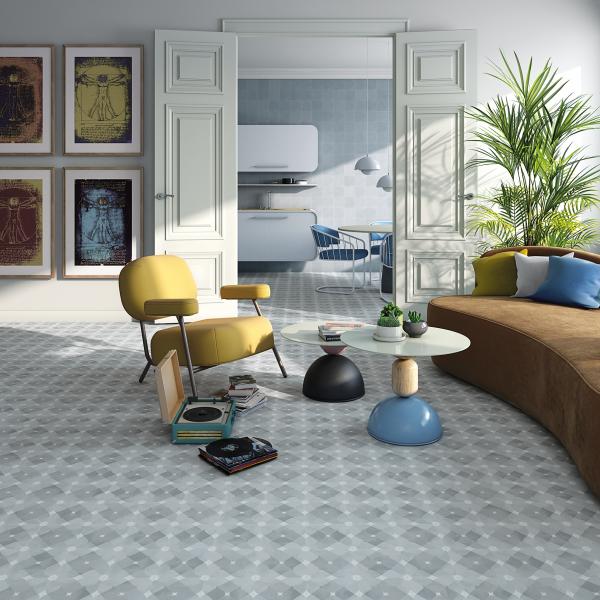
Vives Ceramica's Pop tile in Sixties Celeste is a nod to the decade. It's available in a wide variety of patterns.


